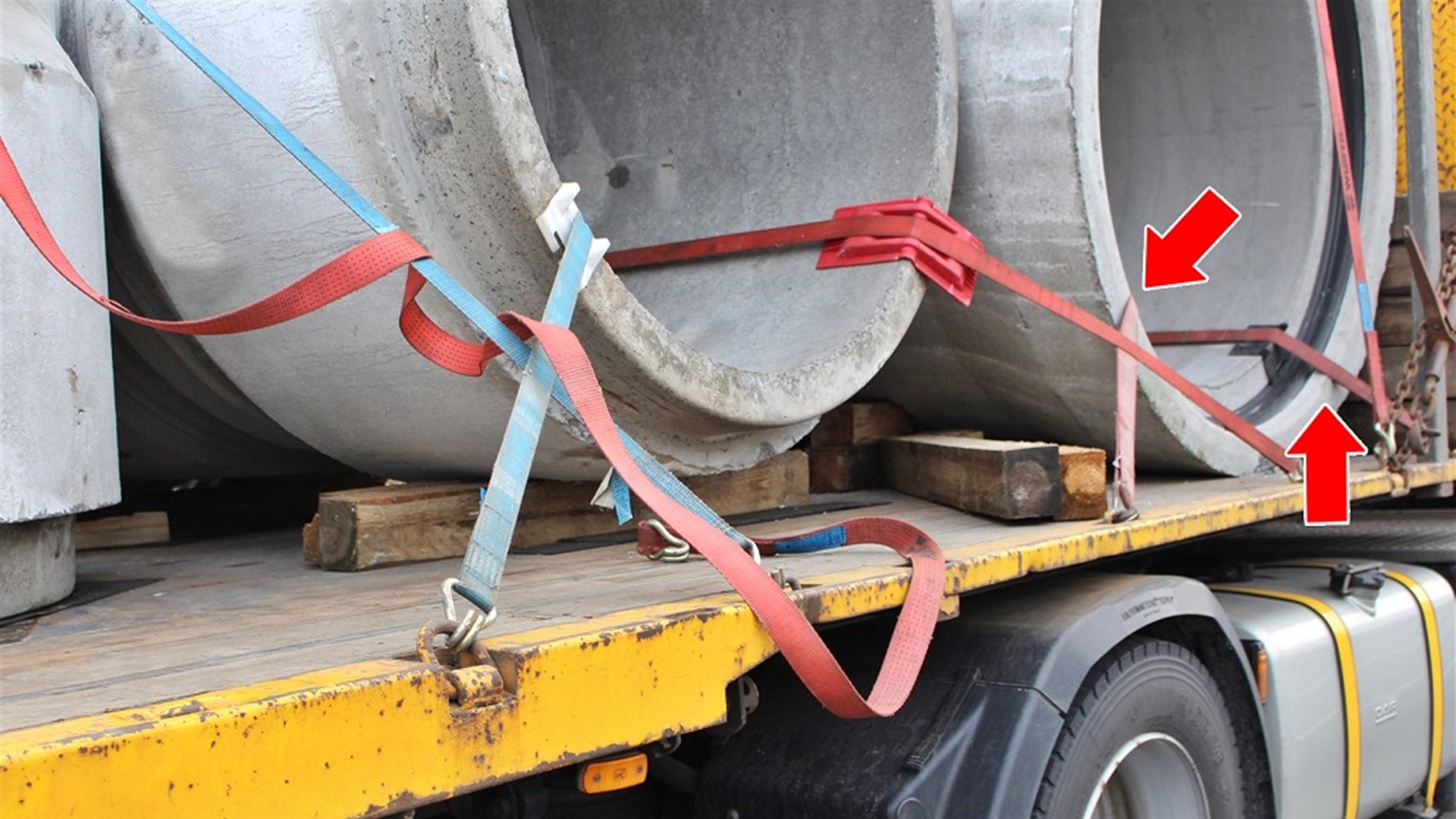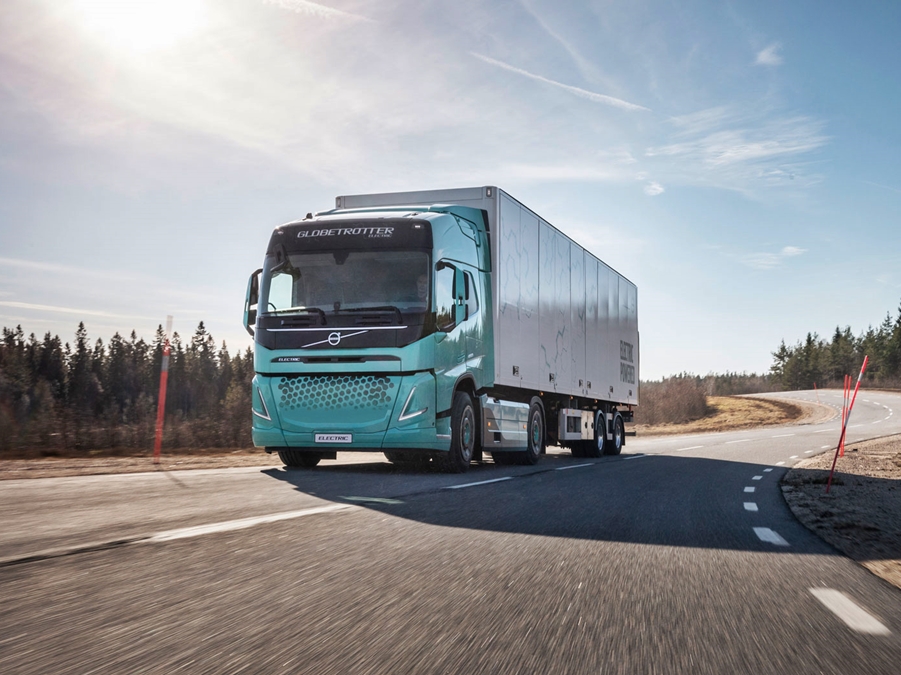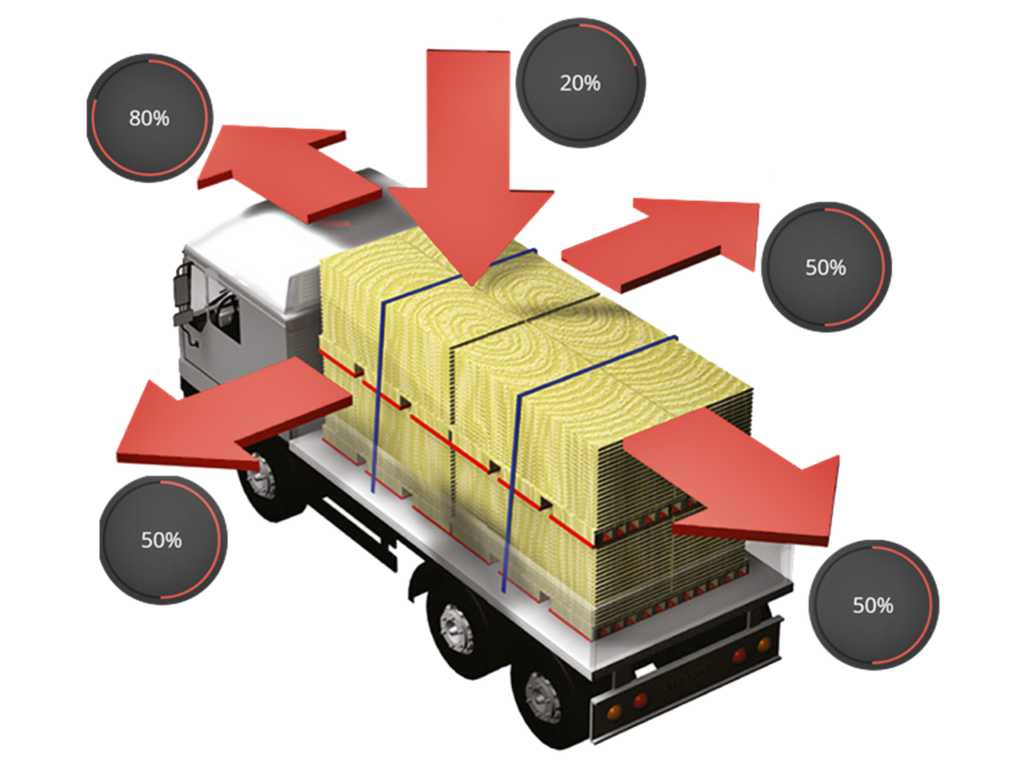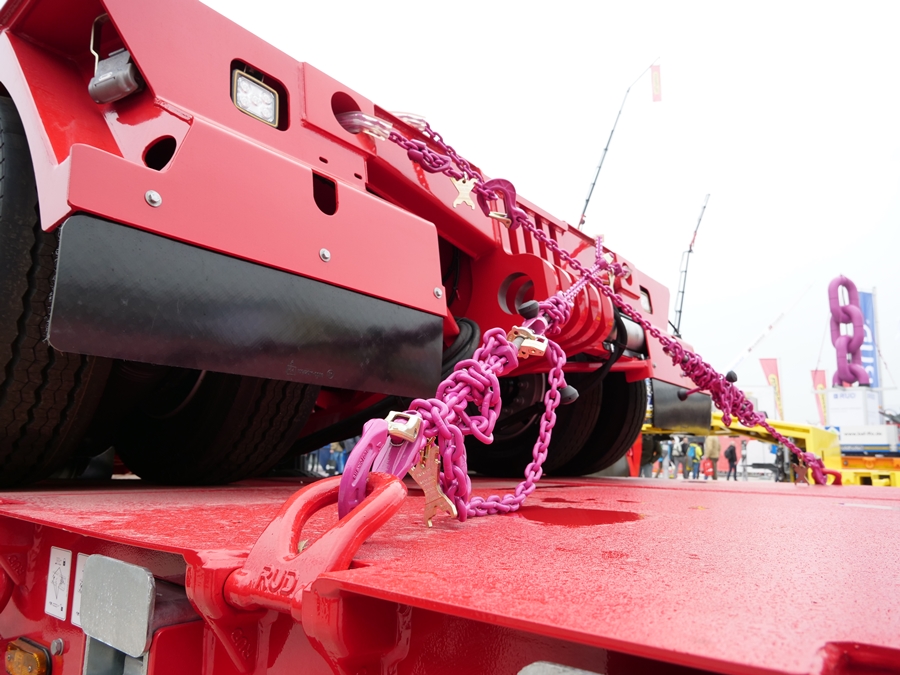This is a 2 part article.
Load securing during transportation faces many challenges, especially when dealing with loads that have sharp edges. The sharp edges pose a risk to the integrity of lashing equipment and can potentially lead to accidents, jeopardising the safety of vehicle occupants and other road users. Hence, understanding the potential dangers associated with sharp edges is critical to ensure safe and efficient transportation.
Sharp edges can cause considerable wear and tear on lashing equipment, primarily due to the concentrated stress they can impose on the lashing material. The repetitive bending and flexing of the lashing equipment as it goes over these edges can lead to fatigue, weakening the material and potentially causing failure. This failure can result in a sudden snap, a gradual weakening, or a distortion in the equipment's shape, resulting in a compromised load restraint system and a potential safety hazard.

In this article, we will address the question of what is considered a sharp edge and what measures should be taken to ensure safety when working with such angles.
Australian National Transport Commission and sharp edges
The National Transport Commission (NTC), in its Load Restraint Guide 2018, emphasises the importance of protecting lashing chains from sharp edges. This guide outlines a clear correlation between the sharpness of a corner and the chain's lashing capacity, highlighting the critical need to consider the load's geometry when selecting and using lashing equipment.
As per the guide, the lashing chain should be protected over sharp edges or rough surfaces to maintain its full lashing capacity.

When the corner radius (r) is less than the chain size (d), the chain's lashing capacity is reduced by 25%. The above figure is taken from the Australian Load Restraint Guide 2018.
Understanding the Corner Radius and Chain Diameter
When assessing load-securing options, the radius of the sharp edge should be considered in relation to the degree of flexibility of the lashing equipment. The corner radius (r) refers to the radius of the curve at the corner of the load, while the chain diameter (d) refers to the diameter of the chain link. Understanding the relationship between the two is critical because it influences the choice of lashing equipment.
To ensure safe and effective load securing, the corner radius should always be greater than the chain diameter. This ensures smooth chain movement over the corner without any risk of jamming, kinking, or undue stress. When the corner radius is less than the chain diameter, the chain experiences increased bending stress, leading to potential damage and reduced functionality.
Protective measures must be implemented to reduce the risk when the corner radius is smaller than the chain diameter. Edge protectors are an excellent option because they serve as an intermediary between the chain and the load, preventing direct contact and protecting the chain from premature wear and tear.
To be continued ...
Article copyright to RUD Group. This information is accurate at the time of publication, and RUD Australia takes no responsibility for any errors, inadvertent or otherwise.
Welcome aboard Australia’s leading material lifting and handling technology company.
Click below to read about us, our products, news, blog posts and everything happening at RUD in Australia and around the world.
Tradition in Dynamic Innovation.
The Need for Adaptation with Electric and Hydrogen Trucks
The transportation sector is on the cusp of a radical transformation, driven by the market and Governments' efforts to reduce greenhouse gas emissions and embrace a sustainable future. Electric and hydrogen trucks are at the forefront of this revolution, which promises a cleaner and more efficient way to move goods.
However, this shift presents significant challenges for the infrastructure that supports heavy vehicles. Australia has several factors to consider regarding axle weight limits influencing mechanical workshop requirements. As per the Electric Vehicle Council, Australian Design Rules (ADR) have several barriers to electrification. ADR is the national standard for road vehicle safety, anti-theft, and emissions. All new road vehicles manufactured in Australia and imported new or second-hand vehicles must comply with the relevant ADRs when they are first supplied to the Australian market. Currently, the width, steer axle mass, and fuel standards are out of step with international regulations, creating a unique and expensive import and modification process for selling a vehicle in the Australian market.
The Rise of Electric and Hydrogen Trucks
Electric trucks powered by batteries are already in Australia. Major manufacturers like Volvo, with its FL model, and Daimler, with its Fuso eCanter model, are already selling electric trucks in Australia. Hydrogen trucks, which utilise fuel cells to generate electricity, are also gaining momentum, offering potentially longer ranges and faster refuelling times.
Both electric and hydrogen technologies offer compelling advantages over traditional diesel trucks, such as:
However, the adoption of these new technologies is not without its challenges.

Axle Weight Limits and Tare Mass
In Australia, the current axle weight limits, which were designed for diesel trucks, are inadequate for electric and hydrogen trucks. The significant weight of battery packs and hydrogen fuel cells, which are crucial for the operation of these vehicles, need to be factored into the tare mass (the weight of the vehicle without a load).
Australia's current regulations focus on gross vehicle mass (GVM), which includes the tare mass and the maximum load the truck can carry. The problem arises when the tare mass of electric and hydrogen trucks exceeds the allowed GVM despite their lower payload capacity compared to diesel trucks.
Challenges for Workshops
The transition to electric and hydrogen trucks poses several challenges for workshops that maintain and repair these vehicles.
A Collaborative Effort
Addressing the challenges of integrating electric and hydrogen trucks into the Australian transportation landscape requires a collaborative effort involving government, industry, and research institutions. The Electric Vehicle Council (EVC) and the Australian Trucking Association (ATA) have partnered to address the need for electric freight policy. Read the report here.
Embracing a Sustainable Future
The transition to electric and hydrogen trucks presents a significant opportunity for Australia to reduce its reliance on fossil fuels and move towards a cleaner, more sustainable future. It also enables Australia to be in tune with the rest of the world, which is embracing technology at a rapid pace.
However, this transition requires a coordinated effort to address the challenges and capitalise on the benefits. By updating axle weight limits, investing in infrastructure, and promoting skills development, Australia can pave the way for a thriving heavy transport sector that is both environmentally responsible and economically viable.
References
By partnering with ENDUREQUIP for your heavy vehicle lifting requirements, you ensure exceptional quality, superior safety, and efficient operation of an Australian-Made product.
Article copyright to RUD Group. This information is accurate at the time of publication, and RUD Australia takes no responsibility for any errors, inadvertent or otherwise.
Part 2 of the 2-part article. Click here to read Part 1.
The RUD Lashing Point Range
To cater to various load-securing needs in transport, RUD offers a comprehensive range of lashing points, including weld-on and bolt-on options.
Weld-On Lashing Points:
RUD offers a large range of weld-on lashing points for all load-securing solutions.
LPW:
LRBS-FIX:
RUD Bolt-On Lashing Points:
RUD also offers bolt-on lashing points for a variety of load-securing requirements.
LVLBG-PLUS:
OPTILASH-FIX:
OPTILASH-CLICK:
SLP:
Why Partner with RUD for Your Lashing Needs?
There are several compelling reasons to choose RUD for your lashing point requirements:
By partnering with RUD for your lashing point needs, you are guaranteed exceptional quality, superior safety, and efficient operation of all your load securing and lashing requirements.
Article copyright to RUD Group. This information is accurate at the time of publication, and RUD Australia takes no responsibility for any errors, inadvertent or otherwise.
When transporting heavy machinery and cargo, secure and reliable lashing points are critical. These critical components not only guarantee the safety of goods during transit but also minimise potential damage and costs. In addition, appropriately secured loads significantly reduce the risk of accidents caused by shifting cargo, protecting drivers, passengers, and other road users*.
* If you want more details on the importance of load securing, including the NHVR Load Restraint Guide, read our 2-part article published earlier:
The Importance of Secure Lashing During Transport
Imagine a scenario where a load shifts unexpectedly during transport in your heavy vehicle. Not only could it damage the cargo itself, but it also poses a significant risk of accidents for drivers, passengers, and other road users. This is why proper load restraint using certified lashing equipment, as mandated by the Australian Load Restraint Guide, is absolutely crucial.

RUD: A Global Leader in Lashing Solutions
RUD is a world leader in the lifting and lashing industry and offers a comprehensive selection of lashing points with capacities ranging from 3,000 to 32,000 daN. These lashing solutions cater to diverse sectors, including the lashing of heavy and large loads in cargo transportation, vehicle transport, railway operations, and construction equipment.
Uncompromising Quality and Compliance
RUD takes quality and compliance seriously. All the RUD lashing points undergo rigorous 100% crack testing and adhere to the strictest quality control procedures. This ensures that you receive reliable and compliant products that meet the demands of heavy vehicle transport.
Flexibility and Adaptability for Optimised Loading and Unloading
When it comes to efficiency, RUD's lashing points are designed for unmatched flexibility during loading and unloading operations. The compact designs with large eye diameters allow greater versatility when using different lashing equipment. The diverse welding surfaces also enable easy and seamless integration into the truck or trailer chassis during the build process.
For instance, the RUD OPTILASH-CLICK system stands out for its ability to be moved along the chassis, reducing the required number of lashing points. This translates to cost savings and a lighter weight for your heavy vehicle.

Benefits of Choosing RUD Lashing Points
There are numerous advantages to incorporating RUD lashing points into your transport operations:
Without Trucks, Australia Stops! But when trucks need to go, Endurequip keeps them going!
To be continued ...
Article copyright to RUD Group. This information is accurate at the time of publication, and RUD Australia takes no responsibility for any errors, inadvertent or otherwise.